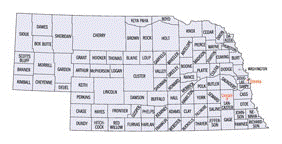Geography
Date of this Version
1972
Abstract
This report concerns Malone, a problem area of Lincoln, Nebraska, that is undergoing considerable change as a result of external influences from the city and the university. In 1971, a graduate Seminar in Urban Geography devoted a semester to the spatial aspects of blight In cities and as a part of this course prepared short reports on specific aspects of Lincoln's example of a blighted zone. The point of departure for the field work was the conceptual framework of the transition zone as it was developed by Burgess in the 1920's and refined by others at a later time, especially Griffin and Preston in the 1960 ' s. As background for the field work, the class discussed studies of this zone as it has developed in American cities, and supplemented these with talks by Gerald Henderson, Human Rights Officer of Lincoln, and Dr. George Underwood, Director of the City-County Health Department. The class also drew on work done by members of the School of Social Work and the Department of Sociology at the University of Nebraska. However, the field project approach was geographical as the students attempted to describe and explain certain spatial patterns that exist in the area. Therefore, maps included in the reports constitute foci for the research. The five reports included here are not intended as finished reports on the area but are discussion papers, utilized as part of a learning process in a graduate seminar. They also should serve to familiarize readers with work being done in the department of Geography.
A brief word about data is pertinent. 1970 census information, when published, was uti lized but detailed block data were not available at the time. The cut off for field work was mid 1971 so changes in the area since that time are not included.
The boundaries of what is called "Malone" are indefinite. Some research has been focused on the area bounded by Vine and R Streets and by 14th and 23rd Streets; the Malone Community Center is a focal point of this area and a sizable proportion of the population is black. However, for the purposes of geographic study the area was enlarged considerably. Problems of land acquisition by the University and city result in impacts upon a larger area. The problems of relocation of the Rock Island Railroad and of deterioration of housing also are best related to a larger region. Therefore, an area of approximately 55 blocks, from Q to Y Streets and from 19th to 26th Streets, was included. Preparatory mapping of this area had been carried out in 1970 by Kjartan Magnusson, a graduate student in geography. Although arguments may be presented that using Holdrege and 27th Streets as boundaries would have been even more valid, the included boundaries were retained to avoid the compl ications of land uses along those two arterials.
The editor wishes to express appreciation to various persons who met with the group during the course of study and who later provided data and suggestions regarding the research: Dr. George Underwood, Orville DeFrain, and George Conkling of the Lincoln-Lancaster County Health Department; Gerald Henderson, Human Rights Officer of Lincoln; members of the City Planning Department; and Professor Merlin Lawson of the Department of Geography. Initial mapping work by Kjartan Magnusson was an invaluable starting point. The final copy was typed by Mrs. Patricia Larsen. The editor is alone responsible for the direction of the project.


Comments
Published in Occasional Papers No. 2, DEPARTMENT OF GEOGRAPHY, UNIVERSITY OF NEBRASKA, Lincoln, Nebraska, May 1972